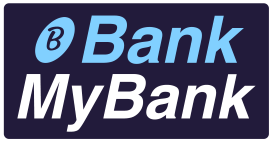EMIs, or equated monthly installment agreements, are a type of loan that lets you pay back the loan over a preset period with fixed monthly installments. A no-cost EMI option is a little unusual because it enables you to pay for an expensive good or service with nearly no interest added.
EMIs are a terrific alternative to the conventional method of paying for a good or service in one flat sum. When you choose a regular EMI plan, you agree to pay only the product price over a set length of time with a high rate of interest levied as part of each installment.
A no-cost EMI plan, on the other hand, as its name suggests, offers the appeal of having no interest to pay. There is no interest applied to the amount that the borrower borrows from the lender. They might make for a great way to fund major expenditures. There aren’t any interest fees associated with the amount that the borrower borrows from the lender. They could be a great way to fund important purchases.
Read More: How do GILT Funds work? Four Things You Need to Know
How Do Free EMIs Operate?
As we previously covered, a no-cost EMI arrangement enables you to pay back your loan in equal monthly installments over a predetermined time frame without incurring any interest charges. For the borrower to be eligible for the no-cost EMI program, an up-front charge may be required. This amount may be paid in full at the time of application or as part of the monthly installments.
There are two primary categories of free EMIs:
comparing the discount to the EMI’s interest
With this approach, the shop leaves out any discount from the price they give the EMI seeker. For instance, if a product is made accessible to all customers at a discounpricecing, the person looking for a free EMI will still be able to purchase it at the standard price.
When interest is added to the installment payments
With this free EMI, the customer can pay the interest on the EMI in fixed amounts throughout the loan. Banks, non-banking financial firms (NBFCs), and other financial institutions provide this kind of discount to help consumers with the borrowing procedure.
Law Concerning Free EMIs
The no-cost EMI scheme is a scam, as stated in notifications that the Reserve Bank of India (RBI) has issued. Its 2013 circular makes it clear that no-cost or 0% APR EMIs are essentially non-existent. According to experts, in no-cost EMI plans, the interest rate is included in the product’s price. It is also common for retailers and lenders to provide loans with no interest and then sell goods or services at inflated costs.
However, free EMI programs are quite well-liked by users.
Advantages of No-Cost EMIs
Regardless of whether they have additional costs, consumers who want to buy expensive items like appliances and cars frequently choose no-cost EMIs. For instance, those who use credit cards can choose to pay the whole amount upfront and then divide it into equal monthly payments over a certain length of time.
Because it can help them with their immediate financial circumstances, users prefer this type of funding. Although they might not have enough money to pay for their buy all at once, they can afford to make monthly payments to cover the cost of the item over time.
No-cost EMIs offer not just a quick and simple loan application process, but also a mechanism for borrowers with poor credit histories to access financing.
Users are not required to explicitly pay interest on the amount they have lent.
Costs for processing or documentation are frequently quite low.
Customers of a wide range of banks, retailers, and lenders are eligible for this program.
If you choose to take out a small number of no-cost loans and pay them back on time, it can help your credit score.
The main motivation for banks, retailers, and lenders to offer free EMI to their consumers is to persuade them to purchase their goods or services.
Banks benefit from increased consumer attraction and long-term customer retention.
Retailers can sell more goods while also making customers satisfied with their purchases.
They serve as a marketing tool for loans offered by lenders.
Read More: What is Mission Shakti?
Drawbacks of no-cost EMIs
Of course, there are no free meals in life. Free EMIs can come with some drawbacks.
As previously stated, experts concur that the majority of no-cost EMI schemes are a farce because the interest is somehow incorporated into the EMI, typically in the processing fee. Additionally, if customers are unable to make their monthly payments on time, they risk paying higher amounts due to high-interest rates, late fees, and taxes on interest paid.
It may be difficult to obtain new credit if you have outstanding EMIs, and even if you can, the interest rates may be very expensive.
Customers don’t know exactly what will be charged to their credit card until after they’ve made a purchase.





